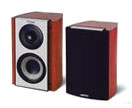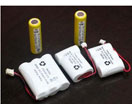WHPTC overcurrent protection devices used for security solutions
一、Security concept:
Security refers to the "security system" for short. Security system SPS (security & protection system) in order to protect public safety purposes, the use of security products and other related products constitute intrusion alarm system, video security surveillance systems, access control systems, explosion-proof safety inspection system, etc.; or consisting of these systems for the subsystem combined or integrated electronic systems or networks.
Security systems in the domestic standard is defined as SPS, while foreign is more called loss prevention and crime prevention (Loss prevention & Crime prevention). Loss Prevention is the task of the security industry, crime prevention is the police law enforcement duties.
二、The basic structure of security systems:
Security system include: closed-circuit surveillance systems, burglar alarm system, building intercom systems, for Parking Management System, Community Card system, infrared perimeter alarm system, electronic fences, patrol system attendance access control systems, security room systems, electronic examination system , smart locks and so on.
Simple sum up, each subsystem's basic configuration includes: front, transmission, information processing / control / display / communication three elements. Different subsystems, the specific content of its three units vary.
Such as video security monitoring system VSCS (video surveillance & control system) using video technology to detect, monitor fortified area and real-time display and record live images of electronic systems or networks. The front-end equipment of various types of cameras (or video alarm) Monitor and its ancillary equipment, transmission mode can be used coaxial cable or optical fiber transmission; system's terminal device is a display, record, control, communications equipment (including multimedia technology equipment), generally independent video center console or monitoring - alarm center console.







三、Security equipment and power supply system, the main structural features:
1, security equipment supply circuit characteristics: the majority is the use of a single multi-output power supply system, a few are independent power supply.
2, security equipment applications complex electromagnetic environment, vulnerable to all kinds of electromagnetic interference, lightning, power supply voltage fluctuations, easily through the power lines, data ports (such as USB ports, RS232, RJ45 Interface) and other incoming high-current equipment damage.
3, susceptible to heat, humidity affected.
4, the installation is easy to produce a variety of errors (such as short circuit, power lines reversed, data cable and power lines are wrong), it will produce large current damage to the device.
四、WHPTC overcurrent protection in the security equipment to solve the problem:
1, WHPTC the power input to do with lightning protection lightning protection components , overcurrent protection Applications:
In such applications , mainly in order to avoid supply voltage fluctuations , lightning current interference generated overcurrent damage related equipment.
2, WHPTC in a single multi- branch power supply system in the application:
In this application, able to solve a single piece of equipment damage due to make the whole system crash issue. WHPTC in this system because one can solve
Devices ( such as building intercom in a single user ) short-circuit of the entire system can not work the problem , to achieve the ultimate goal is when the short-circuit protection thus appears timely to isolate faulty equipment from the system out without affecting the other devices work properly. Can effectively avoid the installation is easy to produce a variety of errors ( such as short circuit, power lines reversed , data cable and power lines are wrong ) , and damage to equipment.
3, WHPTC in the security device data interface protection applications:
Security equipment susceptible to a variety of electromagnetic interference , lightning , power supply voltage fluctuations, easily through the power lines, data ports ( such as USB ports , RS232, RJ45 Interface ) and other incoming high current equipment damage. Here WHPTC application can effectively protect the data port of the connected system devices.
4 , to solve over-temperature protection ( for outdoor equipment , fault equipment protection ) .
五、WHPTC overcurrent protection device in the security of application methods:
Common problems described above, but also the most critical, fatal problems. Is also considered in the design of most problems, problem-solving methods are also varied. But no matter which method you use have a common characteristic, that is the use of multiple components, the circuit is more complex, more space, high cost, not easy to repair.
Between the above, here WHPTC solve such problems using methods and techniques:
From the above description of the problem can be seen, these problems have a common characteristic, that is, which can damage the power supply circuit. So, to solve this problem the focus is concentrated to a power supply circuit, power supply circuit protection on. We just need to supply the anti-theft devices in series with an online self-resetting overcurrent protective device WHPTC, you can simultaneously solve the above problems. At least the components used, there is only one element, and the circuit simple, minimal space, low cost, no maintenance.
Use of specific methods associated with the loaded position of each of the following circuits where red highlights. Model PTC-circuit current according to the different sizes are different.
六、PPTC overcurrent protection device applications in the security advantages:

七、PPTC overcurrent protection device in the security application is installed in the following example Photos:












八、WHPTC in USB3.0 applications:
Latest USB3.0 protocol ( or "SuperSpeed USB") was developed to provide higher data transfer rates , and through support for each port on the higher current levels to improve supply capacity . It includes new power management features, and is backwards compatible with USB2.0 devices new cables and connectors. The most significant change is that additional copper 4 parallel data lines are added to the existing USB2.0 bus ( as shown). These additional data lines are used to transfer the copper high-speed data transfer but also other harmful ESD and transient voltage .
USB3.0 increased current and power supply capacity implies the need for new circuit protection programs. An improved method of circuit protection can help protect USB3.0 applications from over current, over temperature and voltage transients caused by ESD damage.
Overcurrent protection :
USB3.0 provide power through two components : a standard Host (A type connector ) and a new type of power supply equipment (Powered-B connector ) . Latest SuperSpeed specification can increase the amount of current supplied to the USB device ( increased from 0.5A to 0.9A). The new Powered-B connector allows a USB device up to 1.0A of current to charge another device . Due to an overcurrent condition will affect the power bus , all power ( such as hosts, hubs, and Powered-B devices ) must provide overcurrent protection. UL60950 overcurrent protection is also required by the standard .
Similarly with USB2.0 , USB3.0 host all types of power must be supplied . USB3.0 single unit load weight is defined as 150mA, 100mA than the USB2.0 slight increase . Now, a per-port USB3.0 host must be able to support up to six units (900mA). In addition , USB3.0 bus-powered hubs may no longer need it. All USB3.0 Hub must now be able to support each port 900mA of current.
In addition , support for USB charging and USB3.0 systems need to be able to withstand higher current overcurrent protective device . USB charger with USB2.0 specification uses the same pin configuration, but allows higher currents ( per port up to 1.5A).
Finally , USB3.0 defines a new connector Powered-B , the main advantage of a better portability. Powered-B connector allows to remove the USB cable and additional power . Use Powered-B connector USB devices can now be powered by another USB device . By providing two additional connection socket , the new connector enables a power supply ( with a Powered-B connector socket ) capable to another device ( with a B-type power connector plug ) provides up to 1000mA current. For example , a printer can give a wireless adapter power supply , eliminating the need for a wired USB connection.
In all these applications, polymer positive temperature coefficient device (PPTC) for the USB overcurrent protection provides the most cost-effective solutions . PPTC devices can be used USB3.0 host applications , USB3.0 hub applications, USB charger applications, and USB3.0 Powered-B connector applications current limiting protection. The USB port VBUS power installed PPTC PolySwitch devices are available in short-circuit current limiting to prevent short circuit caused due to sudden downstream circuit overcurrent damage and to help achieve UL60950 standards.
PPTC overcurrent protection devices help designers meet the USB 3.0 specification new high-current requirements and provide a simple, space-saving solution for current limiting .







WHPTC PPTC overcurrent, overtemperature protection features in the infrared cameras, speed dome and other security monitoring equipment in a timely and effective to prevent accidental high voltage high current, partial short, crosstalk over current, over temperature and other damage to the equipment , because of the timely protection and self-recovery characteristics, reduce production and maintenance costs, so that monitoring equipment complies with UL, 3C, TUV, GB series safety test requirements.
八、PPTC overcurrent protection devices commonly used in the security model:
1、Plug PTC: WH30-110, WH30-135, WH30-160, WH30-250, WH30-300;
WH60-110, 1WH60-135, WH60-160, WH60-250. WH60-110 is mainly used more often, mostly supply voltage 12V, 5V, consider the special circumstances elect partial pressure. 2, SMD common: WH1812-010, WH1812-014, WH1812-110, WH1812-150, WH1812-160, WH1812-260. Supply voltage 12V majority. 3, for new customers, new products according to the actual requirements of selection.


































